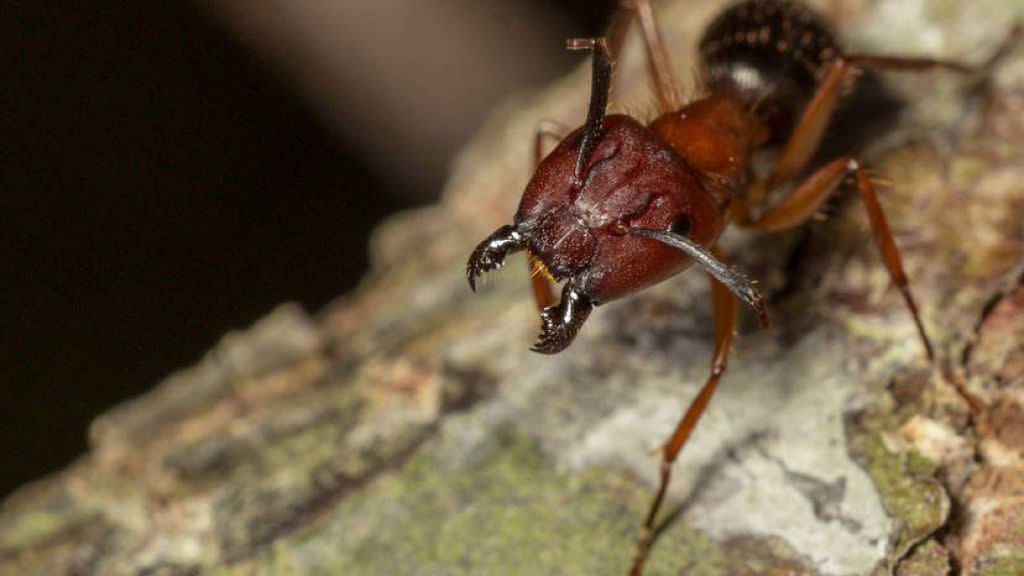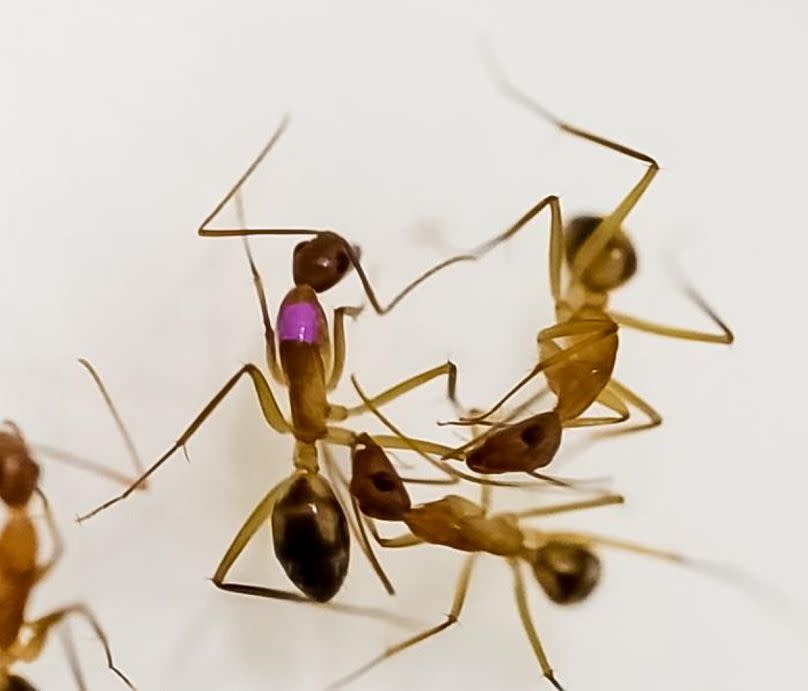Scientists discover ants are capable of performing amputations - and saving lives

Have you ever wondered if the practice of life-saving surgery is unique to humans? You may be surprised to discover that ants do it too.
Scientists have found that one species, the common, brown Florida carpenter ants which hail from the American state, have medical intelligence.
The tiny creatures selectively treat the wounded limbs of fellow ants in their nests, by either cleaning their wounds or amputating damaged limbs and body parts.
A new study, published in the Current Biology journal, lays bare the ants’ talent in the medical field.
It reveals that the insects were able to tailor their choice of care to the type of injury presented to them as well as successfully helping their nestmates to recover.
This revelation is a huge step forward for understanding the species.
“When we're talking about amputation behaviour, this is literally the only case in which a sophisticated and systematic amputation of an individual by another member of its species occurs in the animal kingdom,” Erik Frank, a behavioural ecologist from the University of Würzburg and co-author of the study, explains.

What did the scientists discover about the ants’ medical thought process?
In a paper published in 2023, it was discovered that a different group of ants, Megaponera analis, are able use a special gland to inoculate injuries with antimicrobial compounds meant to quell possible infections.
That means that wound care among ants was not an entirely unknown phenomenon.
However, Florida carpenter ants are particularly impressive because they don’t have that gland and, instead, appear to use only mechanical means to treat their nestmates.
The scientists found that their mechanical care involves one of two routes: the ants either perform wound cleaning with just their mouthparts or choose to perform a cleaning followed by the full amputation of the leg.
The ants were observed to assess the type of injury and then make informed decisions to select which route to take.
As part of the study, two types of leg injuries were analysed - lacerations on the femur and those on the ankle-like tibia.
Experts saw that all femur injuries were accompanied by initial cleaning of the cut by a nestmate, followed by a nestmate chewing off the leg entirely.
For tibia injuries, though, ants only provided the less-invasive mouth cleaning.
In both cases, the ants’ intervention resulted in the insect patients with infected wounds having a much greater survival rate.
“Femur injuries, where they always amputated the leg, had a success rate around 90 per cent or 95 per cent,” Frank says. “For the tibia, where they did not amputate, it still achieved about a survival rate of 75 per cent.”
Without this help, the survival rates for unattended infected femur and tibia abrasions is significantly lower, at 40 and 15 per cent respectively.
“This level of innate cooperation to me is quite striking,” Frank says.
How do the ants know how to treat injuries successfully?
As part of the research, scientists hypothesised that the preferred path of wound care could be related to the risk of infection from the wound site.
Micro-CT scans of ant femurs showed they are largely composed of muscle tissue - suggesting they play a functional role of pumping blood from the leg into the main body.
If injured, the muscles become compromised, reducing their ability to circulate potentially bacteria-laden blood.
In contrast, the tibia has far less muscle tissue and, as a result, much less involvement in blood circulation.
“In tibia injuries, the flow of the hemolymph was less impeded, meaning bacteria could enter the body faster. While in femur injuries the speed of the blood circulation in the leg was slowed down,” Frank explains.
You might think, in that case, that because tibia damage results in faster infections, amputating the full leg would be the most appropriate course of action.
However, the opposite was observed - and it’s down to the speed at which the ants can amputate a leg.
A typical ant-led amputation takes at least 40 minutes to complete. When it comes to tibia injuries, if a leg is not immediately removed post-infection, the ant would not survive.
“Thus, because they are unable to cut the leg sufficiently quickly to prevent the spread of harmful bacteria, ants try to limit the probability of lethal infection by spending more time cleaning the tibia wound,” Laurent Keller, a senior report author and evolutionary biologist of the University of Lausanne, says.
“The ants are able to diagnose a wound, see if it's infected or sterile and treat it accordingly over long periods of time by other individuals - the only medical system that can rival that would be the human one,” Frank adds.
But what’s the reason behind this apparent medical expertise among these ants?
“It’s really all innate behaviour,” Keller explains. “Ant behaviours change based on the age of an individual, but there is very little evidence of any learning.”

 Yahoo News
Yahoo News 
